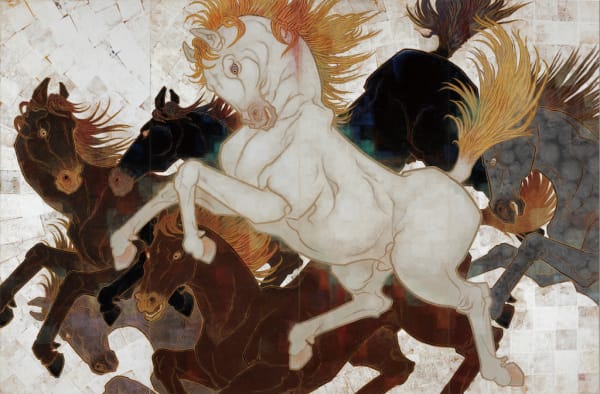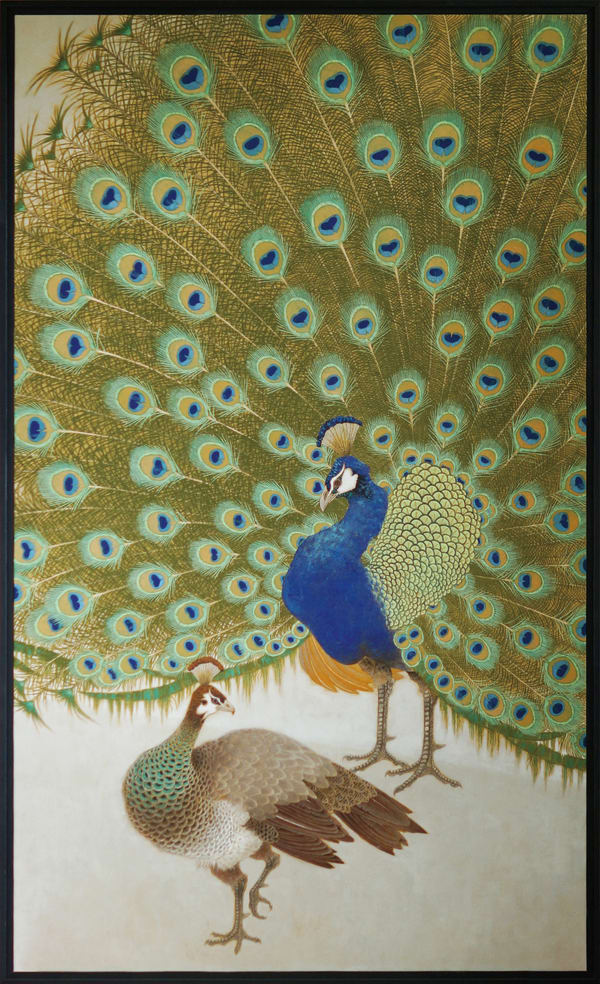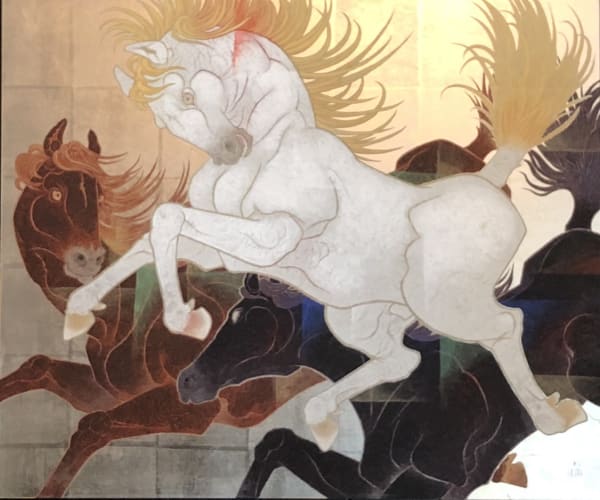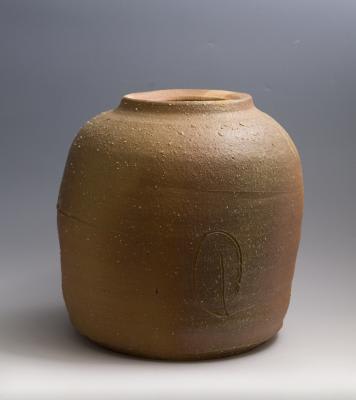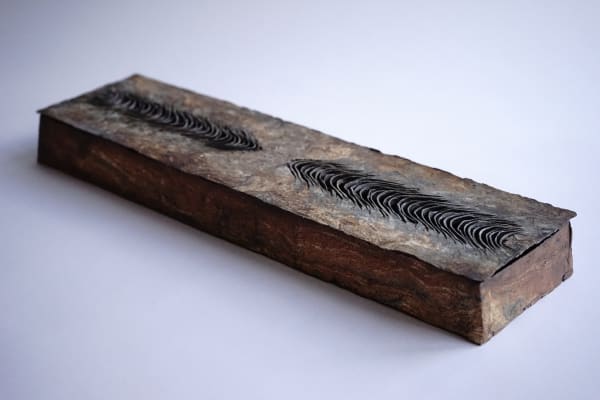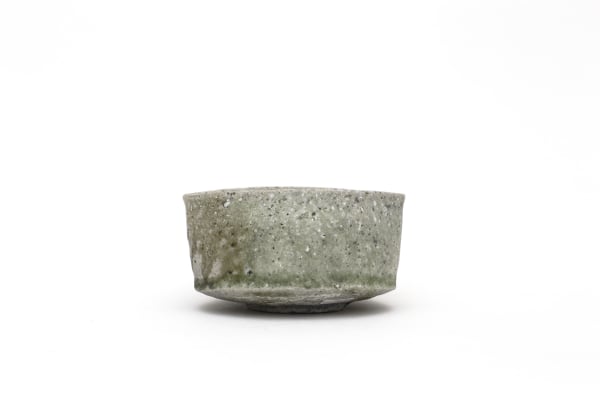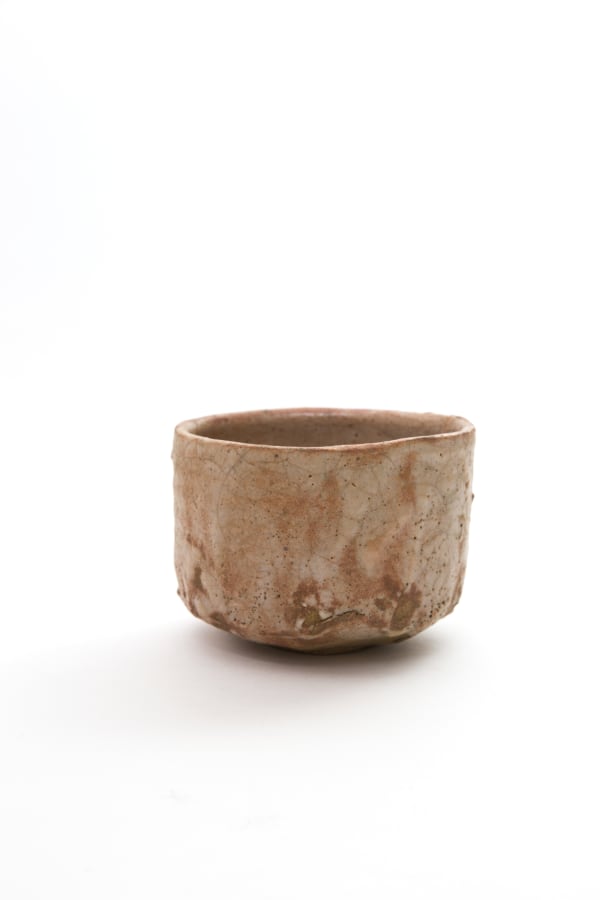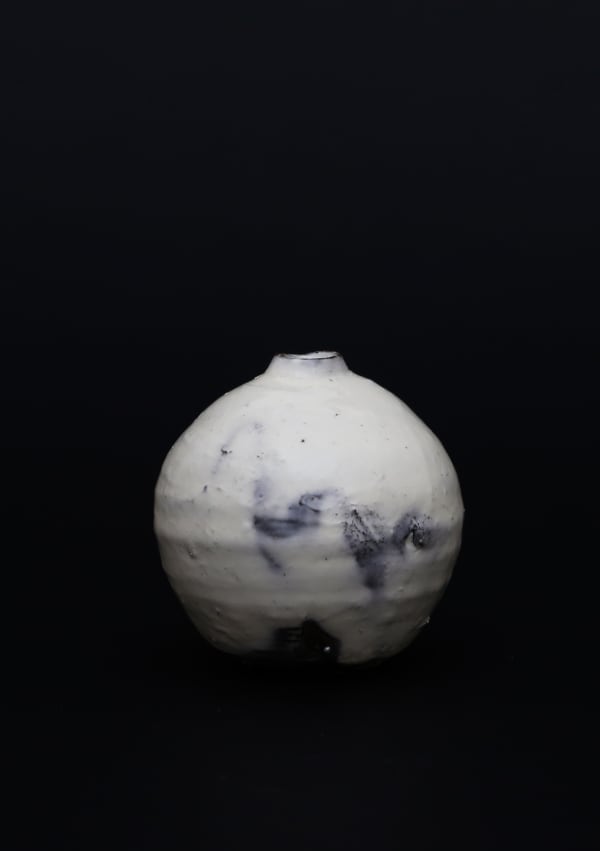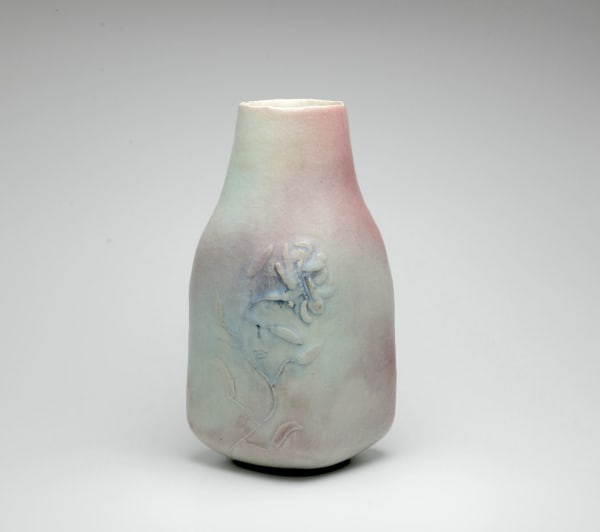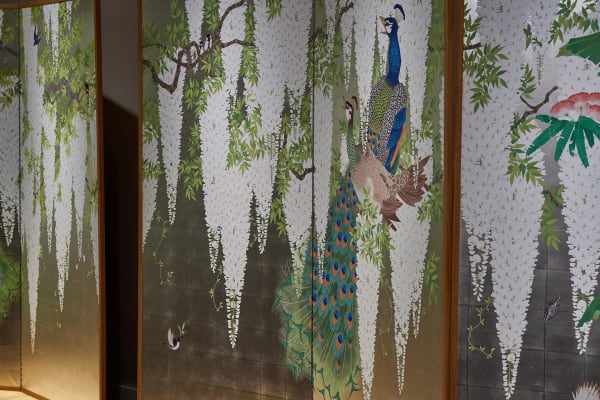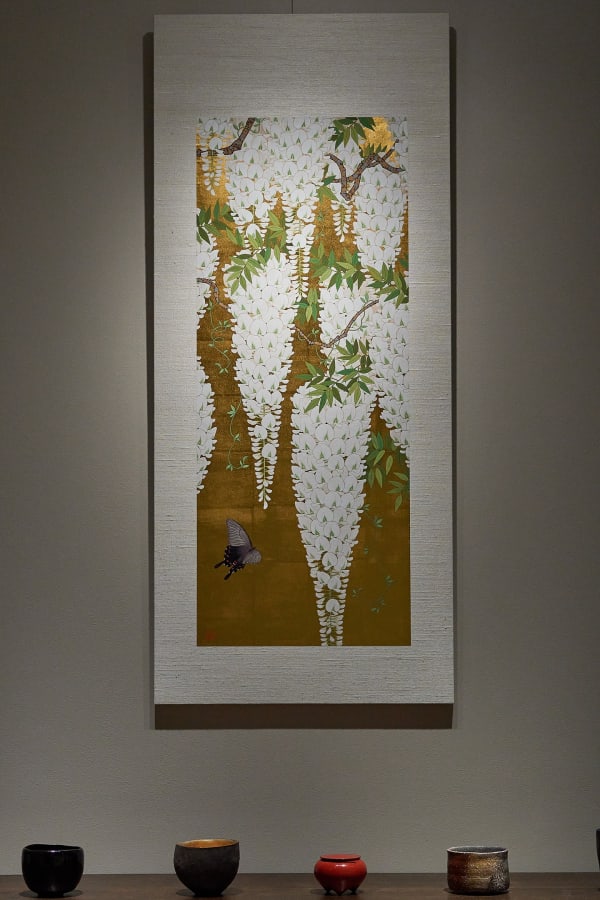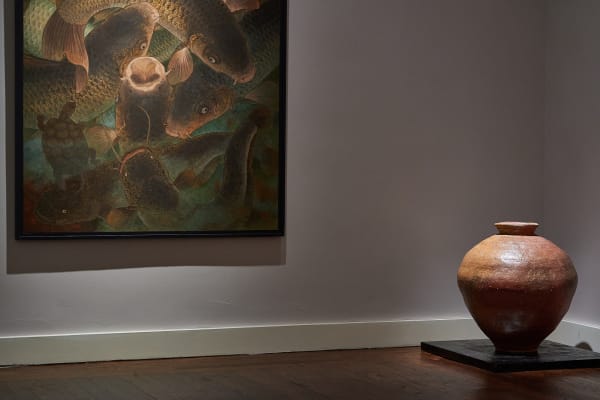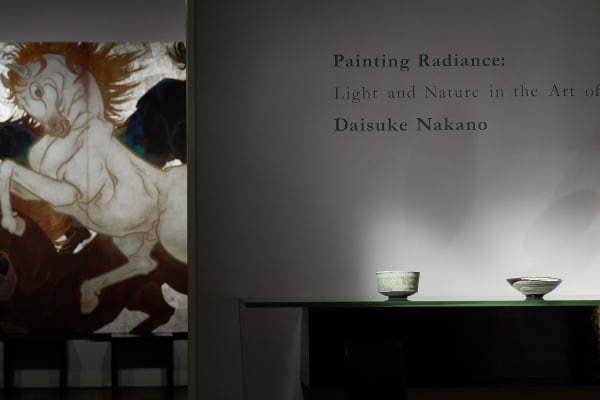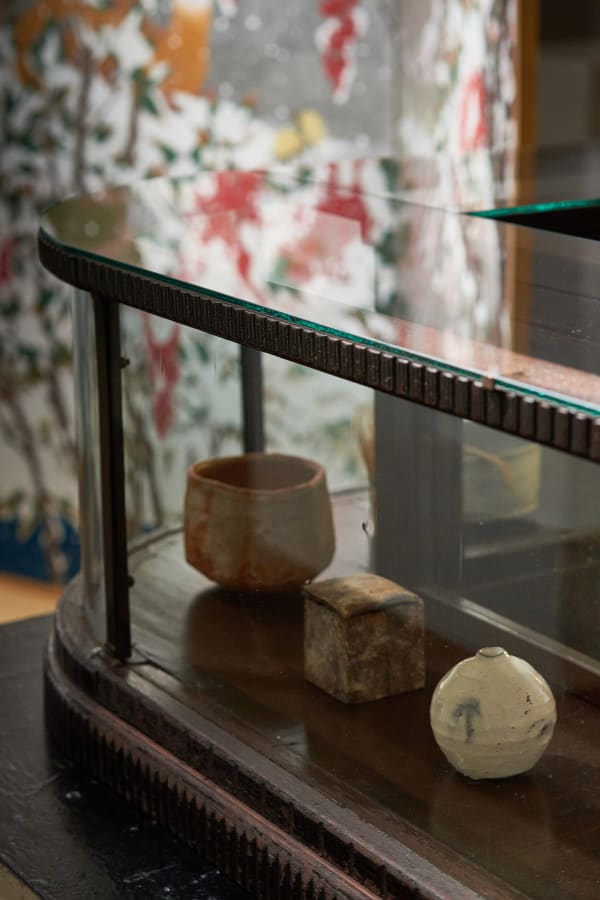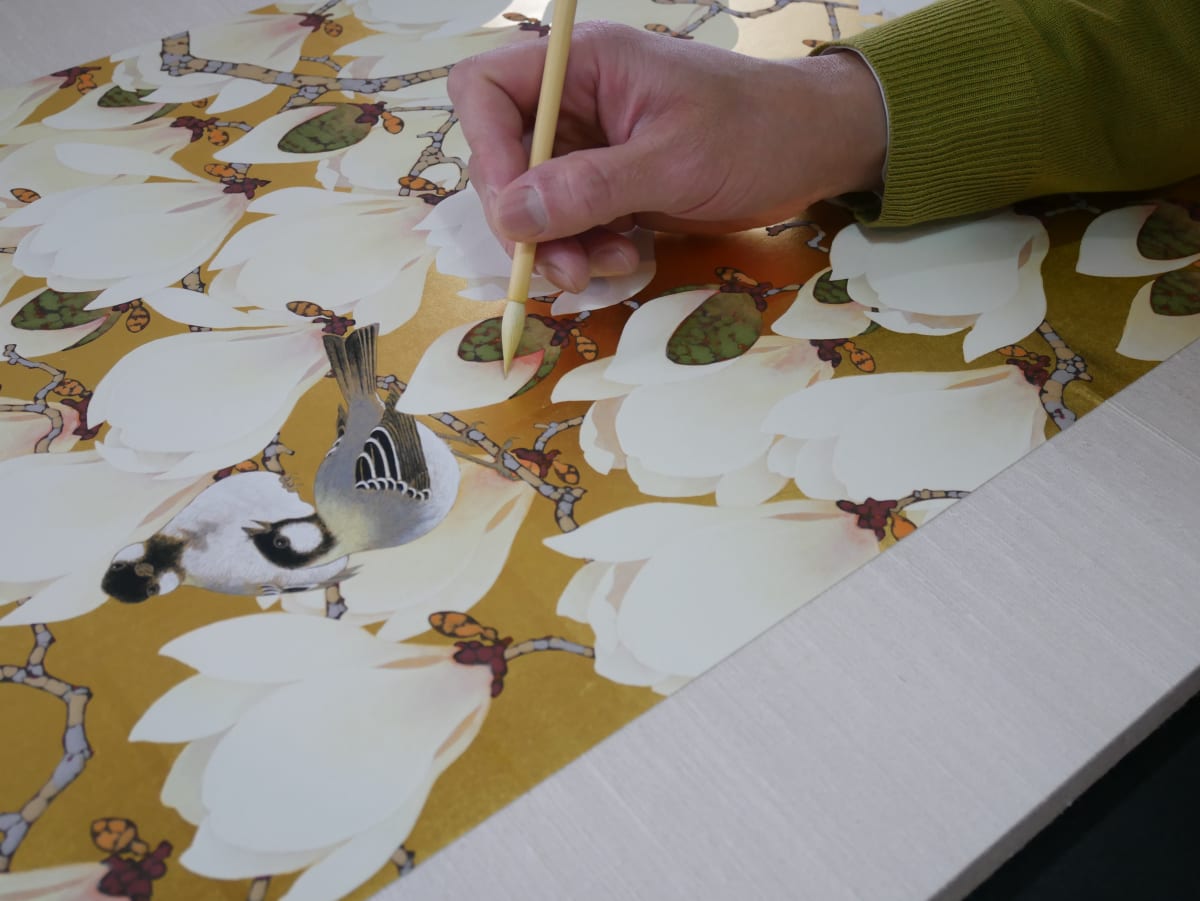Painting Radiance: Light and Nature in the Art of Daisuke Nakano
If There is a Heaven
Daisuke Nakano creates paintings of light. I think, if heaven exists, it would resemble the landscapes of Nakano’s creation. Following Illuminating All Over the World, a painting that had brought hope last summer, this spring Nakano added a pair of two-panel screens titled, Blessed with Light. With beautiful wisteria blossoms that seem to flow down from the sky, the elegant peacocks, the plants and insects of early summer…each element possesses a vitality that makes them seem alive.
The overpowering composition, the exhaustive lines, the faithful details and the living colors, standing in front of this work, I find my heart stirred by its dazzling beauty, my chest becomes filled with joy and my body grows warm. It is a feeling akin to being bathed in sunlight. It is the light of compassion, of nature, which is severe yet kind. The clusters of flowers on the wisteria become entangled in the peacock’s feathers as they blow in the wind, their mysterious yet sacred perfume making us forget reality in the moment.
Nakano utilizes traditional materials and techniques of Nihonga-style Japanese painting. Employing an earnest sensibility and tenacious observation, he applies paints stroke by stroke, preventing him from producing more than a few works over the course of a year. This is an example of the Nihonga-style painting of the Reiwa period, it throws a light on the chaotic world in which we live and represents the highest level of style. We hope you will come and stand in front of Nakano’s paintings and allow yourselves to dream.
Shoko Aono
NEW YORK, NY – Ippodo Gallery, New York, is pleased to announce the return of Daisuke Nakano for PAINTING RADIANCE: LIGHT AND NATURE IN THE ART OF DAISUKE NAKANO, an exploration of the artistic energy that binds humanity to nature. Born and raised in Kyoto, from an early age Nakano has explored the history and styles of Nihonga, or traditional Japanese painting. Nihonga originated with the Japanese schools of painting that flourished prior to and during Japan’s Edo period (1615–1868). During that time, renowned institutions such as the Kano, Tosa, and Rinpa schools, among others, produced paintings and styles that would become canonized as representing a distinctly Japanese aesthetic. The paintings often centered on themes of nature, human figures, and scenes from classical literature and poetry. Visually, these paintings were distinguished by having a relatively flat perspective and were composed with paint made from mineral based pigments mixed with natural glues that create a matte effect on Japanese washi-paper or silk canvases. During the late nineteenth century, with the rise in popularity of Western-style painting, the establishment of state sponsored art schools, and the decline of many traditional art institutions, historically distinct styles of Japanese painting converged under the broad canopy of Nihonga. Contemporary Nihonga continues to reflect these diverse influences, while maintaining traditional techniques in composition and materials.
As a dedicated Nihonga artist, Nakano begins by hand-mixing powdered mineral pigments with a solution of natural glue, made from deer collagen, dissolved in water. Many of his paintings, such as “Radiance: Blessed with Light” feature flat, boldly colored plants and animals against a gold or silver background. This technique evokes the Rinpa school, a style that originated in the mid-seventeenth century and is most famously associated with the painter and designer Ogata Kōrin (1658–1716). Showing the breadth of his influences, Nakano’s meticulously detailed animals and trees also recall the style of Maruyama Ōkyo (1733–1795), who merged Western naturalism with Japanese decorative styles. Beneath these traditional elements, Nakano arranges the gold and silver foil of his background to create a subtle, yet distinct, grid, which propels his figures forward as if they might emerge from the painting’s surface.
Daisuke Nakano is a visionary in contemporary Nihonga painting. He is precise, tenacious, and patient. Producing only a few paintings a year, he spends the time perfecting each line and capturing the light and life of the subject matter. Whether it be deer, galloping towards the sunrise or peacocks perched on branches of full spring bloom, his paintings contain a sense of time standing still. Learning to appreciate traditional Japanese painting methods, he created his own style of painting through filling the entire canvas or screen with ornate detail. He expresses the change in our natural world and bridges the connection between human and nature, light and dark, life and death. To look at Nakano’s painting is to understand that paradox, the existence of life does not mean the absence of death but the beautiful collaboration that is the cycle of life. Daisuke Nakano celebrates life with each brush stroke and with each painting illustrates a collaboration of time, life, light, and nature.
Nakano’s works can be found in museums and collections around the world; the Indianapolis Museum of Art at
Newfields recently acquired “Magnolia 'Luminous Wind,'” and featured this painting in “A Brush with Beauty”, an exhibition highlighting masterpieces in Japanese painting over 700 years.
After its initial presentation at Ippodo Gallery New York, Painting Radiance will travel to Portland Japanese Garden for its second iteration in June. We anticipate that Daisuke Nakano’s paintings will bring warmth and
light to hearts during this spring season.





